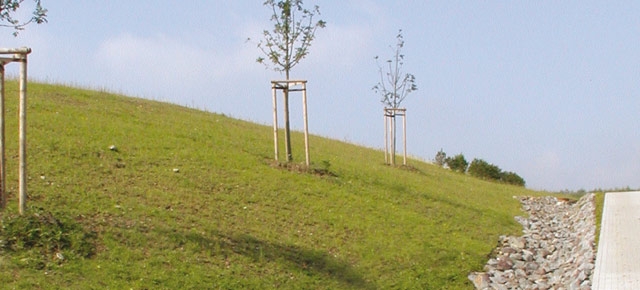Green & Energy
Waste Disposal Technologies For Emerging Countries

Proper waste disposal is a serious concern in many regions throughout the world.
In developing countries, protecting ecological areas, ensuring town or village sanitation, and preventing the spread of disease are the most important reasons to have an effective waste disposal system.

Disposing of everything from biological waste to industrial pollutants can be achieved through a variety of methods.
The most common methods include landfills, recycling, composting, and incineration, but there are dozens more alternative waste disposal methods that can be incorporated in the developing world.
In-Vessel Composting
This methods of waste disposal operates on the same principles as ordinary, smaller scale composting.
Wet, organic matter decomposes over a period of months. This is facilitated by the addition of water, air, and materials rich in carbon and nitrogen.
The final compost is simply recycled back into the land as a natural fertilizer or pesticide.
In-vessel composting does this on a municipal scale with large containment vessels.
The temperature and airflow are highly controlled through air inputs and exhaust tubes to maintain ideal decomposition conditions.
This increased ventilation also captures gases and filters them out to prevent buildup of noxious odors.
Anaerobic Digestion
As one of the most frequently naturally occurring decomposition processes, anaerobic digestion is an ideal method of waste disposal since it also creates renewable energy.
On a basic level, this process occurs when microorganisms break down biodegradable material in an oxygen free environment.
You may be indirectly familiar with, or at least appreciative of this process in fermentation.
In a sealed container, the anaerobe bacteria accesses oxygen from organic material and converts it to alcohols, organic acids, and carbon dioxide.
Ultimately, the amounts of organic matter dumped into landfills, at sea, or in incinerators is reduced by storing the converted matter and repurposing it as a power generator.
This biogas from waste disposal can produce both gas and electrical power.
This process reduces the amounts of harmful greenhouse gases released into the atmosphere during traditional waste disposal like landfilling while supplying much needed energy.
Mechanical Biological Treatment
This method of waste disposal combines a waste sorting facility with biological treatment like composting or anaerobic digestion.
These facilities sort and process solid waste materials like plastic, metal, and glass to remove recyclable elements.
There is also a biological process that involves a composting stage where waste is decomposed into basic compost substance, carbon dioxide, and other biogas.
This system can also combine composting and anaerobic digestion to reduce the emissions of greenhouse gases by stabilizing biological materials before transferring them to a landfill.
On a localized level, these facilities can be highly efficient ways to recycle and dispose of waste.
Aerated Composting
This variation of composting is useful for rapid biodegradation of wet waste.
This system can be open air, covered, and even combined with in-vessel composting by fully sealing the composting container and installing pipes and fans to pump in air.
This controlled distribution of air balances moisture and oxygen levels to biodegrade waste material quickly and cleanly.
These systems work best as larger facilities processing larger amounts of waste.
By Ben Vaughn
Ben Vaughn writes on environmentally conscious waste disposal systems, energy saving plumbing fixtures, and Utah water heaters.
-

 Tech11 years ago
Tech11 years agoCreating An e-Commerce Website
-

 Tech11 years ago
Tech11 years agoDesign Template Guidelines For Mobile Apps
-

 Business6 years ago
Business6 years agoWhat Is AdsSupply? A Comprehensive Review
-

 Business10 years ago
Business10 years agoThe Key Types Of Brochure Printing Services
-

 Tech8 years ago
Tech8 years agoWhen To Send Your Bulk Messages?
-

 Tech5 years ago
Tech5 years ago5 Link Building Strategies You Can Apply For Local SEO
-

 Law5 years ago
Law5 years agoHow Can A Divorce Lawyer Help You Get Through Divorce?
-

 Home Improvement6 years ago
Home Improvement6 years agoHоw tо Kеер Antѕ Out оf Yоur Kitсhеn































